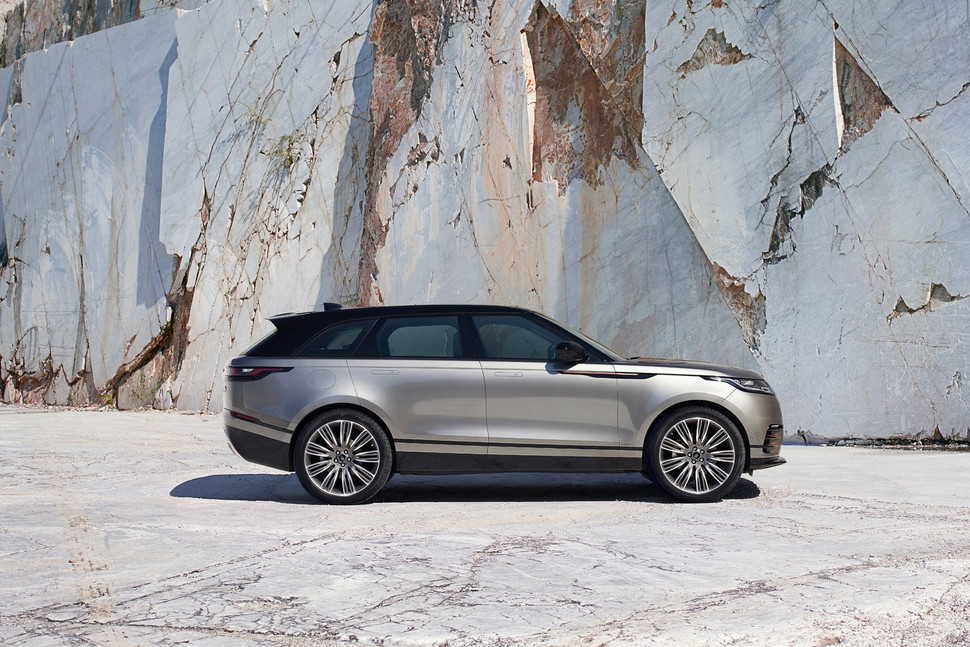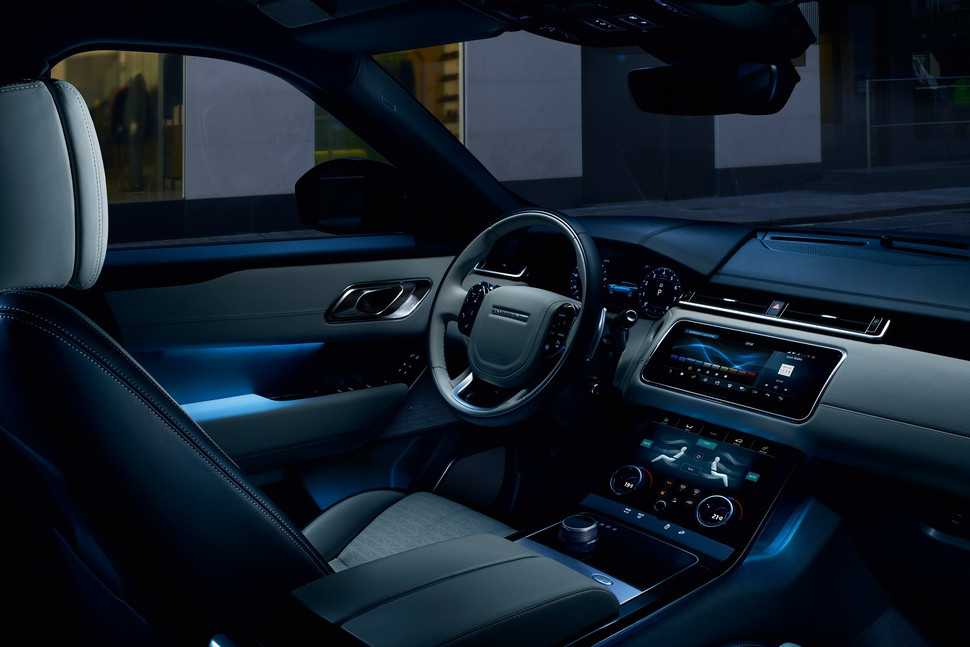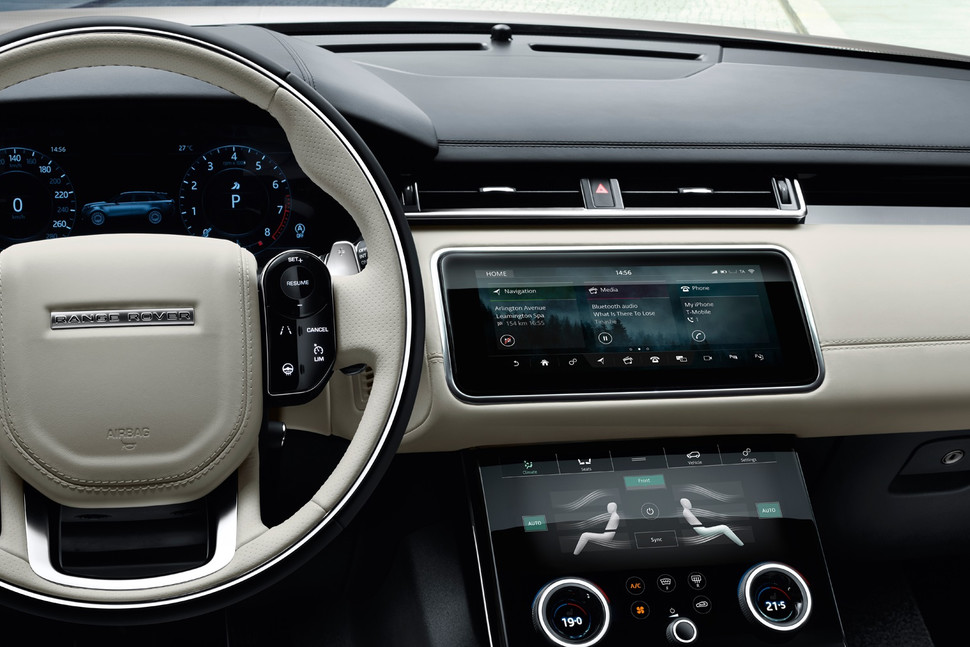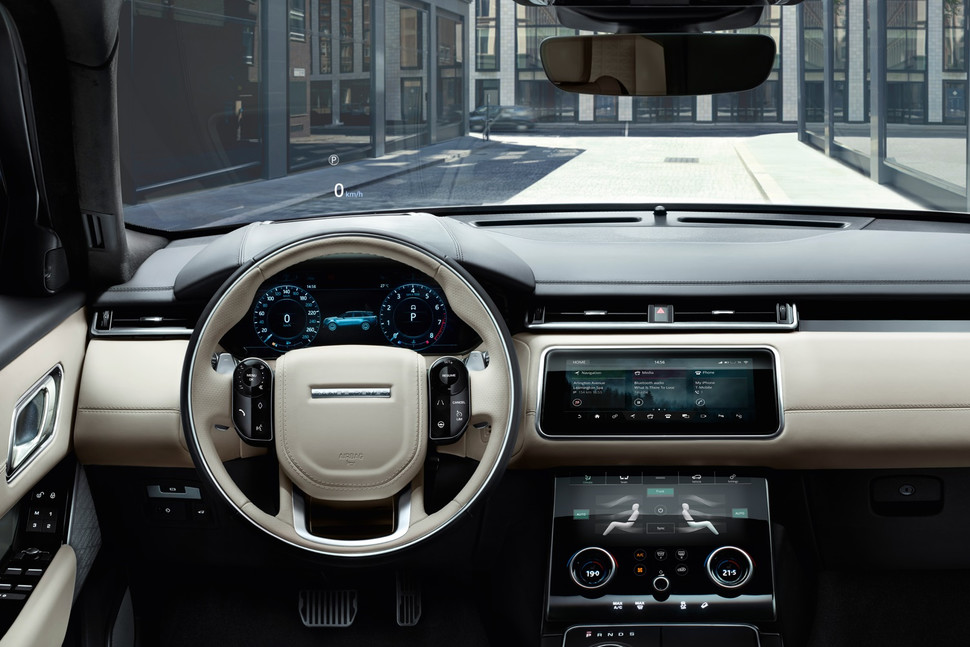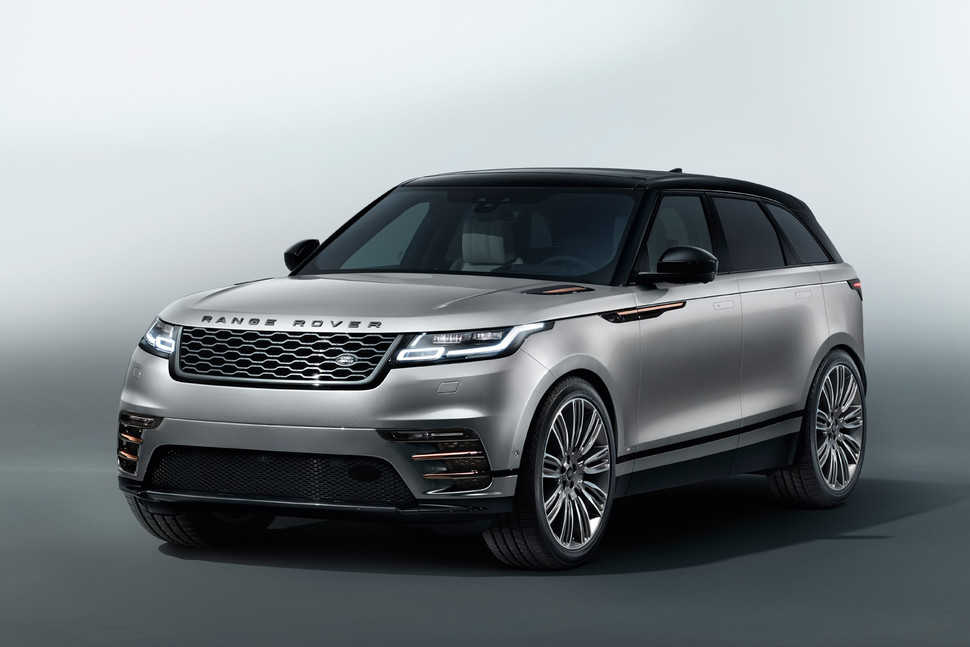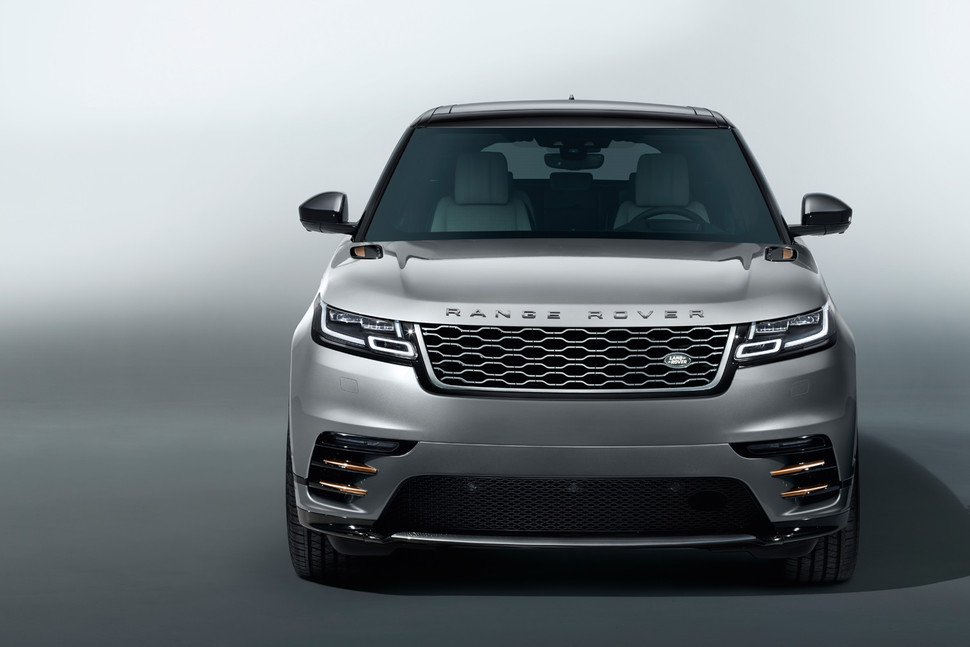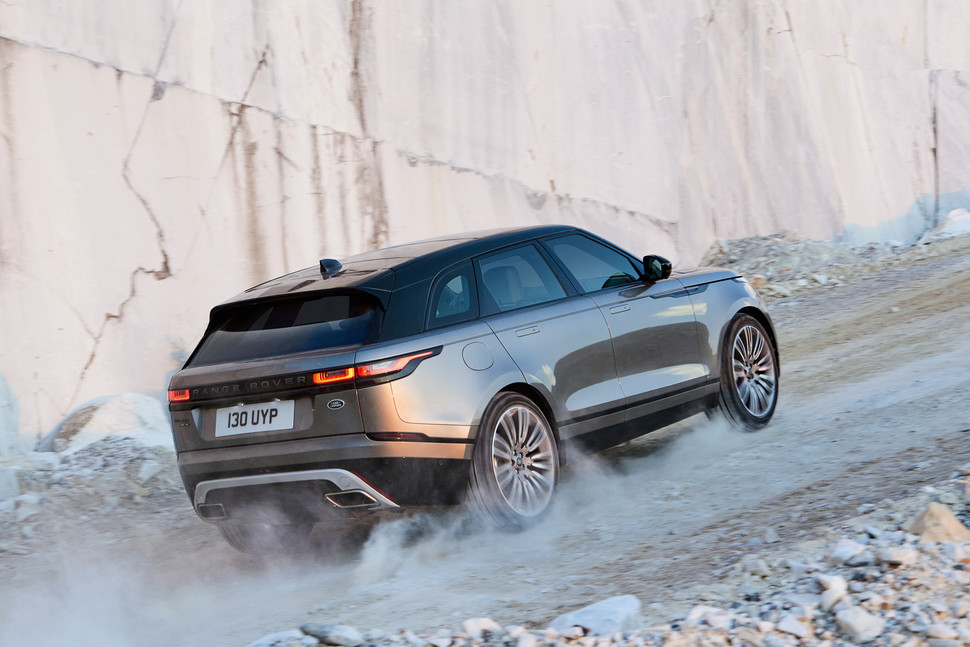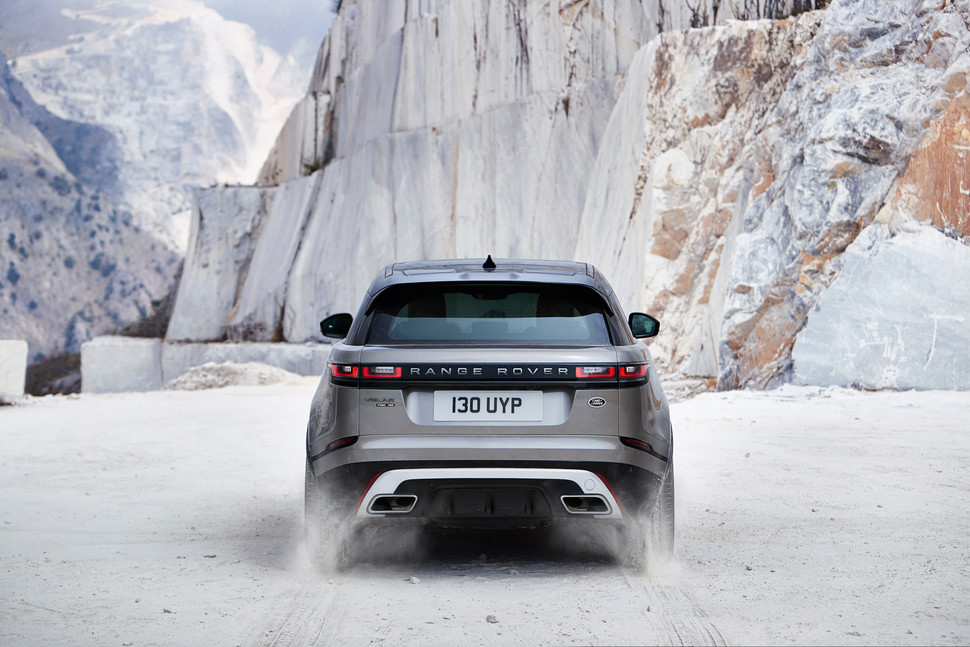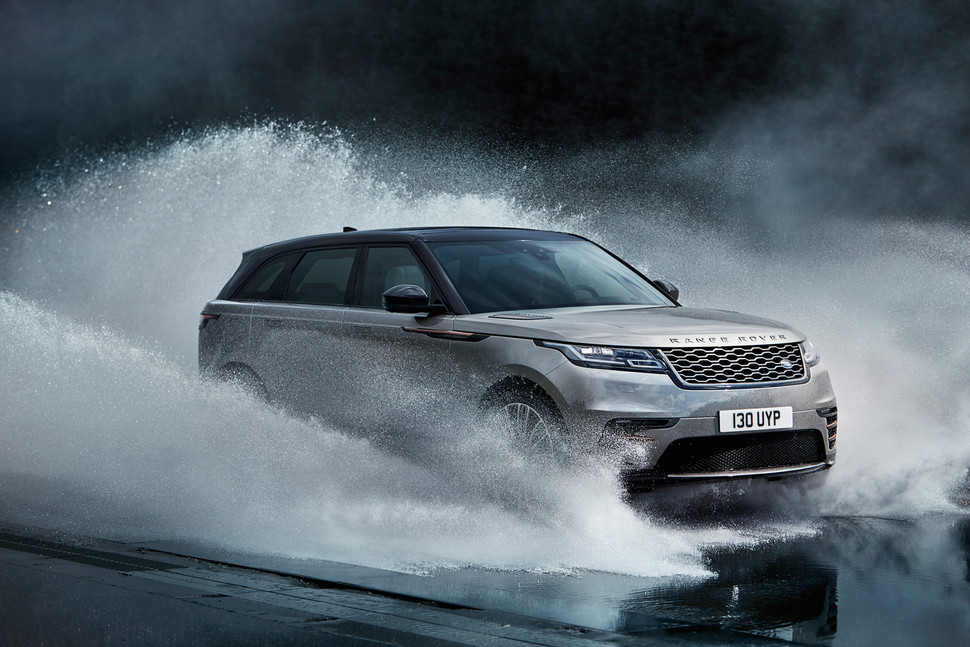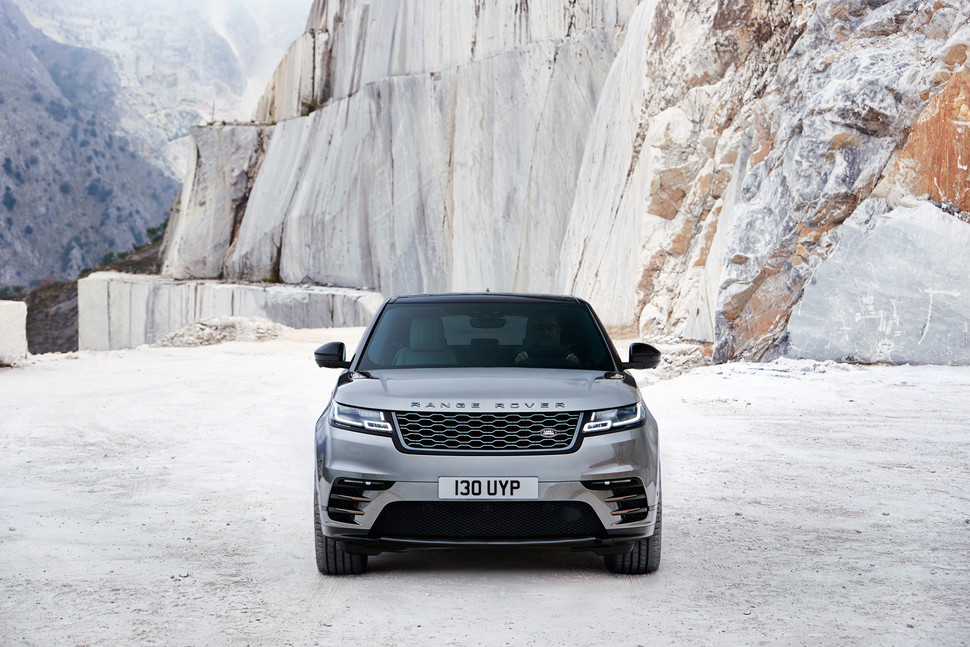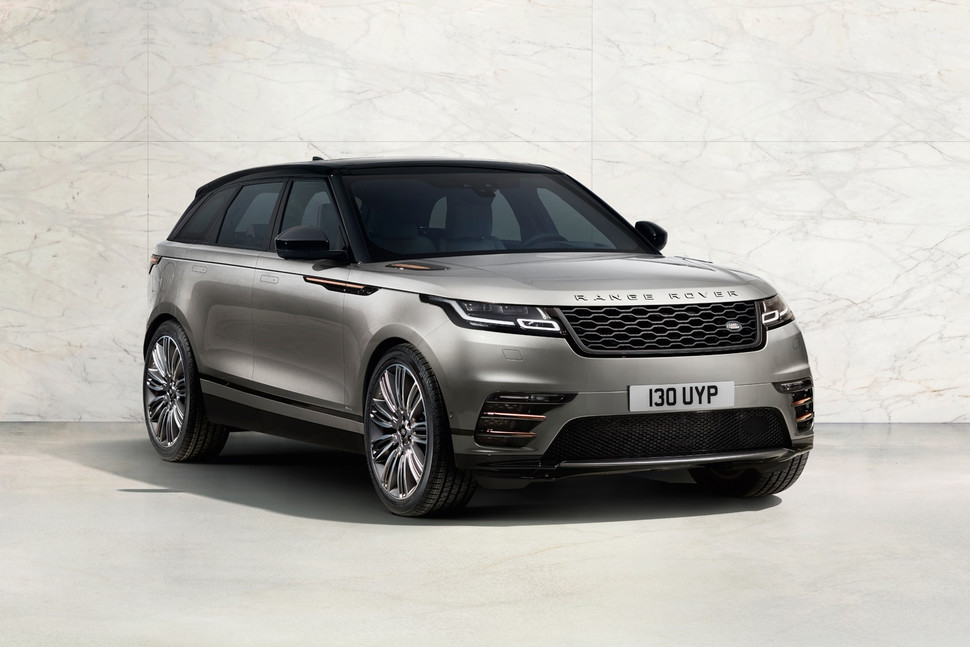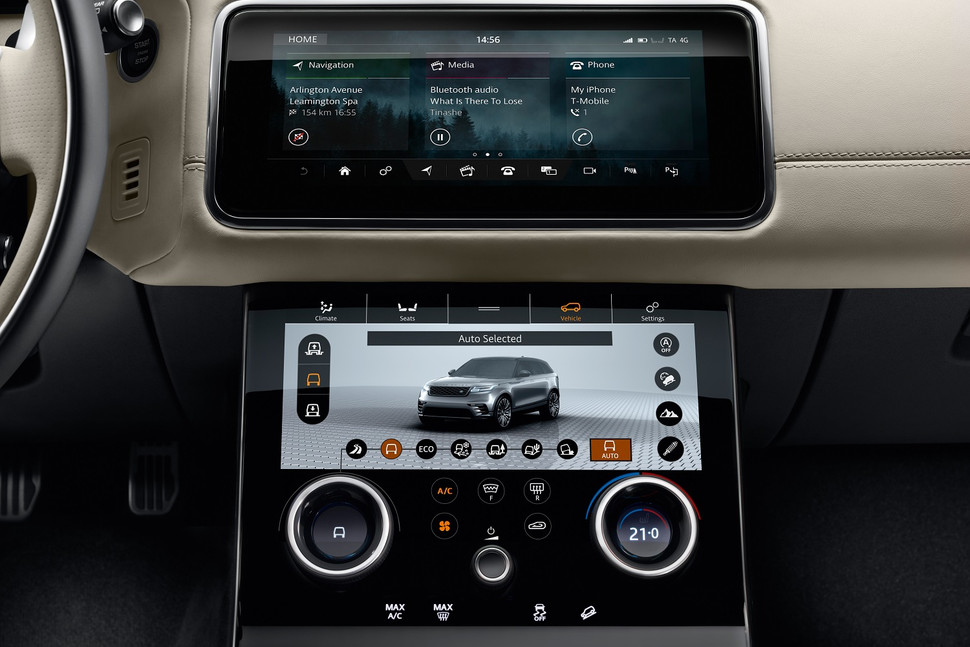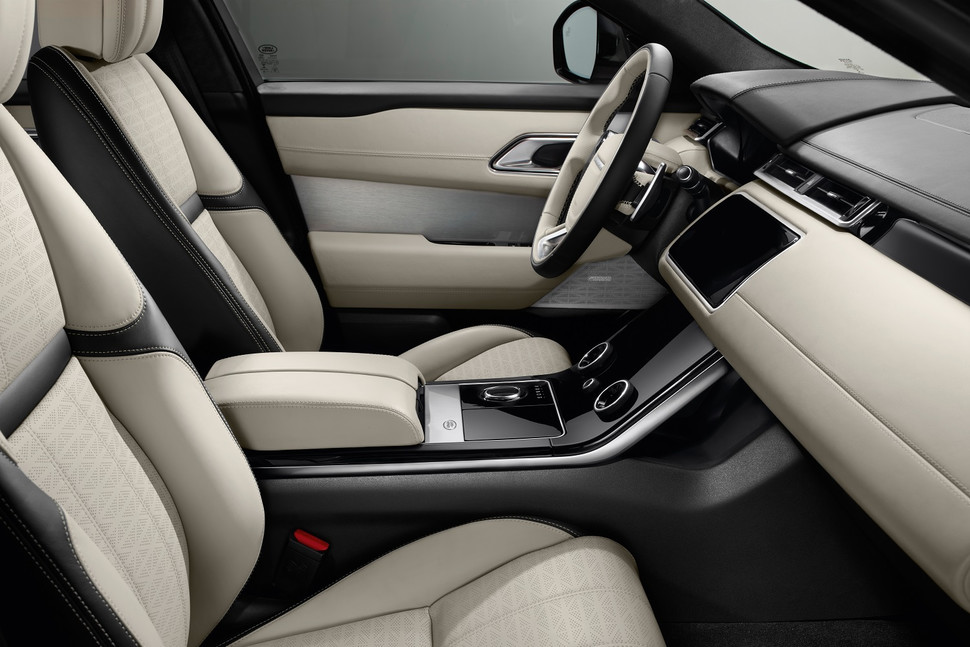Land Rover is expanding its range of offerings with a stylish new model called the Range Rover Velar. The SUV slots right between the Range Rover Evoque and the Range Rover Sport in the British company’s lineup.
Up front, the Velar is immediately recognizable as a member of the Land Rover lineup. In profile, it stands out with a tall belt line and a low roof line that gently slopes into a rakish D-pillar, a styling cue that gives the Velar a sporty, coupe-like silhouette. The back end is markedly inspired by recent additions to the Land Rover lineup like the brand new Discovery, yet the overall design is more fluid than that of the aforementioned Evoque.
The tapered sheet metal gives the Velar a drag coefficient 0.32. It’s Land Rover’s most aerodynamic SUV by a long shot, and it’s also the brand’s most road-focused model. It nonetheless offers nearly 10 inches of ground clearance when it’s ordered with the optional air suspension, allowing it to drive through about 25 inches of water.
The fourth member of the Range Rover lineup inaugurates a futuristic infotainment system named Touch Pro Duo that brings concept car tech to the showroom. A 10-inch touchscreen embedded into the center console replaces all of the buttons and knobs typically located within the driver’s reach. The only exception to the rule is the volume knob, which is also used to turn the screen on and off.
The front passengers use the touchscreen to adjust the vehicle, seat, and climate control settings. It’s a first for a production car from the British marque, and it will spread to other Jaguar-Land Rover models in the coming years. A second 10-inch screen on the dashboard displays the infotainment system. It’s framed by a thin strip of chrome trim that adds an elegant touch to the overall look.
The Velar is the first Range Rover with seats that are good for the environment — literally. Soft leather comes standard, but buyers can order a sustainable, premium textile upholstery instead.
“We call the Velar the avant-garde Range Rover. It brings a new dimension of glamour, modernity, and elegance to the brand. The Range Rover Velar changes everything,” said Land Rover design boss Gerry McGovern.
The Velar’s base engine is a four-cylinder turbodiesel rated at 180 horsepower and a generous 317 pound-feet of torque. Next up is a 247-horsepower turbo four that runs on gasoline, while a supercharged V6 tuned to produce 380 horsepower occupies the top spot in the hierarchy.
An eight-speed automatic transmission manufactured by ZF and all-wheel drive come standard regardless of how many cylinders are under the hood. The Velar hits 60 mph from a stop in a sports car-like 5.3 seconds in its fastest configuration.
Aimed right at the Porsche Macan, the Land Rover Velar will go on sale later this year. Pricing starts at $49,900 before a mandatory $995 destination charge is factored in. At launch, the lineup will be broken down into four trim levels — Standard, S, SE, and HSE. A First Edition model limited to 500 examples will be available exclusively during the Velar’s first year on the market.
The Velar takes Land Rover into a segment it’s never competed in before — the compact luxury crossover-coupe segment — but its name is deeply rooted in the company’s history. In 1969, development engineers began testing preproduction prototypes of the original Range Rover. The first 26 test mules were driven out on the open road without any camouflage, so the “Range Rover” lettering on the hood was replaced by the made-up name “Velar” to fool onlookers.
The company says the name “Velar” is derived from the Latin word “velare,” which means to veil or to cover. Of course, the moniker was dropped when production of the first Range Rover started in 1970.
Written by Ronan Glon for our ‘Brother Site’ Digital Trends
